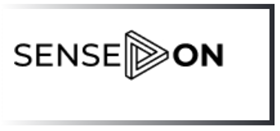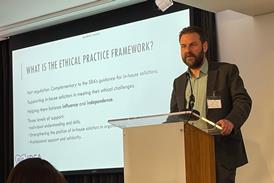(Sponsored content)
The cybersecurity landscape is evolving rapidly, and law firms are increasingly in the crosshairs of sophisticated attackers. Ransomware, data leaks, and breaches can seriously damage client trust and firm reputation. Traditional security approaches, built on disconnected tools and legacy systems, are no longer enough.

Legal practices today face significant challenges: exploding data volumes, AI-powered threats, rising compliance demands, and the unsustainable costs of legacy security platforms. These pressures often result in fragmented visibility, alert fatigue, slow threat response, and steep costs - commonly known as the “SIEM data tax.” For law firms, this jeopardises their ability to secure sensitive data, maintain uptime, and meet compliance expectations.
A foundational shift in security architecture is now required. The SenseOn Intelligence Cloud represents this evolution. Grounded in distributed intelligence, unified data, and AI-native threat analysis, it rethinks the limitations of traditional SIEM and XDR solutions.
This article draws from the Law Society’s recent cybersecurity webinar, where Brad Freeman, Director of Technology and Co-Founder at SenseOn, discussed how the Intelligence Cloud is transforming security in the legal sector. He emphasised the importance of architectural change, not just tool improvement, in meeting today’s cybersecurity demands.
SenseOn's approach starts by tackling the data problem head-on. Its Data Fabric unifies security telemetry from across the environment – endpoint, network, cloud, identity, and existing security tools. This provides unified security visibility in a single, coherent view, eliminating security gaps that disparate tools create. The platform employs a scalable and cost-effective Security Data Lakehouse built on cloud technologies and fast columnar storage, designed to break free from the unpredictable ingestion fees typical of legacy SIEMs. This enables cost-effective, long-term retention of all relevant data for compliance and forensics.
Layered atop this is the AI-driven Controls Layer, which features innovations like Root Cause Triangulation - a patented AI capability that identifies the true source of threats by correlating weak signals across data in real-time. This dramatically reduces false positives (to under 9%, compared to industry norms over 90%) and helps build clear, high-confidence attack narratives. AI agents also continuously learn and adapt, requiring less human intervention. Visualisation tools like the Knowledge Graph show relationships between users, systems, and threats, streamlining investigations. Most detections occur in minutes, with escalated cases resolved in under 20 minutes on average.
Complementing the platform is SenseOn’s Integrated Next-Generation Managed SOC. This 24/7 service works as a seamless extension of the internal team, offering triage, threat hunting, and managed response using full context from the platform. Unlike traditional MSSPs that rely on limited tooling, this SOC delivers broad, consistent protection.
To make security operations more accessible, SenseOn Reveal, a natural language search interface, allows users to explore large datasets without needing specialist query languages. This improves analyst efficiency and makes threat data approachable for non-technical staff.
The financial benefits are also compelling. Compared to traditional SIEMs, SenseOn offers significantly lower and more predictable Total Cost of Ownership (TCO). For example, in a 10-year projection for a 5,000-person organisation ingesting 750GB/day (with 30% annual growth), legacy SIEM models could cost ~£14.5 million. SenseOn’s flat-rate architecture avoids these unpredictable expenses and boosts productivity through automation.
SenseOn supports organisations across sectors, including legal practices in the UK and internationally. Clients report reduced alert fatigue, improved hybrid workforce visibility, operational efficiency, and expert SOC support that integrates seamlessly with internal teams.
The SenseOn Intelligence Cloud by SenseOn, offers law firms a compelling path to enhancing their cybersecurity posture. By providing unified visibility, superior AI-driven threat detection and response, predictable economics, and expert integrated support, SenseOn enables legal practices to effectively manage risk, protect sensitive data, meet compliance obligations, and empower their teams to focus on strategic initiatives, thereby closing the cybersecurity gap in modern legal practice.
Learn more at senseon.io/legal-services
SenseOn

8 St James’ Square
London
SW1Y 4JU
www.senseon.io
info@senseon.io
020 3773 1566






























No comments yet